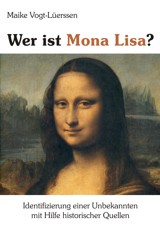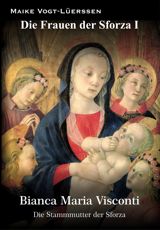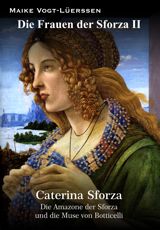On the 26th of January 2022 I’ve received a message regarding a red pencil drawing from a private collection in 2019 called the “Portrait of Lecco” (Fig. 1). I was asked by the owner for my opinion regarding this work.

I am not an art historian, I am a historian. Art historians have goose-bumps, tingling in their stomachs or are overwhelmed by their feelings, when they see a work of one of the Masters of the Renaissance. The famous art historian Bernard Berenson (1865-1959) described his talent to recognize a work of Leonardo da Vinci or of Raphael or of Botticelli etc. as a “sixth sense”: “… it is very largely a question of accumulated experience upon which your spirit sets unconsciously … When I see a picture, in most cases, I recognize it at once as being or not being by the master it is ascribed to; the rest is merely a question of how to fish out the evidence that will make the conviction as plain to others as it is to me.” Sorry, my readers, that sounds like art history is a kind of religion and not a part of science. What happens when these art historians do not get goose bumps etc. when they see a work made by Leonardo da Vinci or they get goose bumps when it is not a work of the latter like in the case of the “Salvator Mundi”?
My approach to the paintings and drawings of the Renaissance as a historian is very different from that of an art historian. The first thing I want to know is: Who is depicted? With the help of the specific symbols of the different dynasties in the Renaissance and the colours of their coat-of-arms and sometimes their use of letters, almost 90% of the persons depicted in the paintings of the second half of the 15th century and the first half of the 16th century can be identified. For the correct identification of their members you also have to know the history of the costume – what was in fashion at what time – to correctly date a painting. When you are able to identify the depicted person, then you can give a suggestion who could be the painter. Don’t forget time travel is not possible. None of the art historians of today ever spent a minute in the workshops of the masters of the Renaissance and their assistants and students to watch them painting and drawing.
Drawings are often not decorated with symbols and it is therefore very difficult to identify the depicted. But after identifying the men, women and children in the Renaissance paintings for now over 20 years, I have to say: Giorgio Vasari (1511-1574) is right. He wrote that nobody was able to paint and draw like Leonardo da Vinci. Even Raphael who was able to copy so many of his colleagues was not able to copy him. And you really can see that. Therefore my first impression looking at the drawing which was sent to me was: This is a work of Leonardo da Vinci. But that is not enough for me in contrast to the art historians. I have to identify the depicted. What was the relationship between Leonardo and the young man depicted?

If this is indeed a work made by Leonardo da Vinci then the young man has to be a family member or a very dear friend of his. Studying the facial features of all the members of the high dynasties in Italy in the Renaissance, I know that the depicted did not belong to these families. When you compare the facial features of this young man (around 25 years old), especially the nose and the eyes, with the facial features of Leonardo’s biological father Ser Piero da Vinci (1429-1504) (Fig. 2) the depicted has to be a son of him, who lived under Leonardo’s care. The depicted is definitely not Leonardo da Vinci himself (Fig. 3). We have so many portraits of him – more than 50! – that we can easily exclude him (Figs. 4, 5 and 6). Please, have a look at some of the many portraits of Leonardo da Vinci, which we still possess.




The depicted in the drawing (Fig. 1) has to be one of the half-brothers of Leonardo. By the way, in the Middle Ages and the Renaissance the term “half-brother” was not used. They only used the term “brother”. Leonardo’s “brothers” had the same father like him, Ser Piero da Vinci, but different mothers. Therefore they were half-brothers. Compare the facial features of the depicted young man on the drawing with the facial features of Leonardo’s biological father, Ser Piero da Vinci (Figs. 2, 7 and 8).


We know from contemporary written sources that four of Leonardo’s half-brothers lived under his care: Gian Giacomo Caprotti (1480-1524) (another illegitimate son of Ser Piero da Vinci), Bartolomeo (1493-1532/34) (a legitimate son of Ser Piero da Vinci and his fourth wife Lucrezia di Guglielmo Cortigiani), Giovanni (1499-1549) (a legitimate son of Ser Piero da Vinci and his fourth wife Lucrezia di Guglielmo Cortigiani) and Lorenzo (another illegitimate son of Ser Piero da Vinci) (1487/88-1544) (in: Maike Vogt-Lüerssen, Isabella von Aragon und ihr Hofmaler Leonardo da Vinci, Norderstedt 2010, S. 229-230). We have portraits of three of these half-brothers: of Gian Giacomo Caprotti (Figs. 9 and 10), who went down in history by his nickname ‘Salai’, of Bartolomeo da Vinci (Fig. 11) and of Giovanni da Vinci (Fig. 12).




The drawing (Fig. 1) could not have been made after 1516 because of the stroke or heart attack Leonardo da Vinci suffered in 1516. But then to my great surprise the owner of this drawing sent me a photo of the back of this art piece (Fig. 13). The drawing is telling us everything we have to know. In his last years in France Leonardo da Vinci already decided which of his works Francesco da Melzo and Salai would inherit from him: “FE SALAI 1511 DINO”. Hence on the background of the drawing, dictated by Leonardo da Vinci and written by Francesco da Melzo, we read that Salai should inherit this work of Leonardo. It was made in 1511. And “DINO” has to be the nickname of one of Leonardo’s half-brothers who lived in his household when the portrait drawing of him was made. Gian Giacomo Caprotti, already mentioned, had the nickname “Salaì”. Bartolomeo da Vinci had the nickname “Il Fanfoia”. Therefore only two of his half-brothers are left of whom we do not know the nicknames: Giovanni, born in 1499, and Lorenzo, born in 1487 or 1488. The drawing was made in 1511. Hence we can exclude Giovanni. He was too young at that time. The depicted has to be Lorenzo (1487/88-1544). His nickname was ‒ as this historical source tells us: Dino. We do not know why Leonardo chose this nickname for his half-brother Lorenzo. In Italian the meaning of the name Dino is: “Little Sword”. Did Lorenzo possess a little sword, of which he was very fond, because it was given him by his biological father? Or was his tongue “sharp as a sword”, meaning Lorenzo could have been very sarcastic, critical or bitter?

But this very important historical source does not tell us the surname of Lorenzo. Had he like Leonardo da Vinci the terrible stigma of being born out of wedlock? Was he born as an illegitimate? Or was Lorenzo’s mother like the mother of Salai married to another man before the birth of her son? This practice was very common in the 15th and 16th century. Think for example of the illegitimate children of Pope Alexander VI (1431-1503) and the six illegitimate children of the Milanese Duke Galeazzo Maria Sforza (1444-1476). This important question of the surname of Lorenzo can be answered, because we are still in the possession of two contemporary historical sources (Fig. 14 and Fig. 16) which are telling us his surname. He was an illegitimate son of Ser Piero da Vinci and his full name was Lorenzo da Vinci. He was born like his famous eldest half-brother Leonardo da Vinci with the terrible stigma of being an illegitimate child. His mother was not married to another man before his birth. By the way, Ser Piero da Vinci had two sons with the name “Lorenzo”. The first “Lorenzo” was born by his third wife Marguerita di Francesco di Jacopo di Guglielmo in 1480. This son died as a young boy in August 1485 and was probably buried together with his mother who died around the same time. Lorenzo, the illegitimate son of Ser Piero da Vinci, was born in 1487/88.
We have a very important contemporary historical source telling us that Ser Piero da Vinci who died on the 9th of July 1504 “was survived by ten of his sons and two of his daughters” (in: Codex Arundel 272r; and Jean Paul Richter, The notebooks of Leonardo da Vinci, 2nd Volume, New York 1970 (originally 1883), No. 1372). But his inheritance was only divided between his following seven legitimate sons (illegitimate sons had no rights to inherit anything from their biological fathers!): 1. Giuliano da Vinci (1478-1525), 2. Domenico da Vinci (1485-1563), 3. Benedetto da Vinci (1489-1530), 4. Pandolfo da Vinci (1490- after 1504 (either in 1506 or in 1520)), 5. Guglielmo da Vinci (1492- after 1539 (probably in 1551)), 6. Bartolomeo da Vinci (1493-1532/34) and 7. Giovanni da Vinci (1499-1549). The eldest son of Ser Piero da Vinci, Antonio, born on 26th February 1476, died in 1490 (if he had survived his father, he would have taken over the office of his father ‒ that was the tradition of that time; but his younger brother Giuliano followed his father in this position) and his third son Lorenzo died in 1485. Therefore three of his illegitimate sons were still alive at the time of his death: Leonardo da Vinci (1452-1519), Salaì (or Gian Giacomo Caprotti) (1480-1524) and Lorenzo (1487/88-1544). (in: Maike Vogt-Lüerssen, Isabella von Aragon und ihr Hofmaler Leonardo da Vinci, Norderstedt 2010, S. 230; Edward MacCurdy, Leonardo da Vinci, The Artist, London 1933, p. 72: "His father, Ser Piero da Vinci, had died, as he records in a note in the manuscripts, on the 9th of July, 1504, apparently intestate, and the seven legitimate sons had divided the inheritance", and Robert Henry Hobart Cust, Leonardo da Vinci, Harvard University 1908, p. 34: "Ser Piero da Vinci had died on July 9th 1504, and his seven legitimate sons divided their father's inheritance among themselves.")
We do not know the name of Lorenzo's mother, but she had three illegitimate children by his father. On the 29th of June 1485 Lorenzo's elder brother Bartolomeo da Vinci was born. The little Bartolomeo already died on the 14th or on the 18th of December 1485. Around 1486 a sister of Lorenzo was born, but we do not know her name, because in the meantime his mother had left Florence and the name of this child like the name of Lorenzo was not registered in the Cathedral Santa Maria del Fiore in Florence. The little girl died in May 1490 and was buried in the da Vinci family tomb, the Badia Fiorentina. Lorenzo was the third child of this relationship between his mother and Ser Piero da Vinci and was born around 1487/88. Since 1505/06 he belonged to Leonardo's household. At that time he was 17 years old. (in: Maike Vogt-Lüerssen, Isabella von Aragon und ihr Hofmaler Leonardo da Vinci, id., S. 230). In contrast to Leonardo da Vinci, his eldest half-brother, Lorenzo was not adopted. The stigma of his illegitimate birth remained with him his whole life which was uppermost in his mind and about which he wrote in one of his publications (Figs. 14). To understand what it meant to be born as an illegitimate child in the Renaissance please read the following very important and very interesting book: Thomas Kuehn: Illegitimacy in Renaissance Florence. The University of Michigan Press 2002.

Lorenzo da Vinci (Fig. 15) – we possess another portrait drawing of him made by Leonardo da Vinci around 1515 – decided in later life to become a lay brother of the Compagnia di Santa Maria della Misericordia to live in voluntary poverty to help the poor, the sick and the dead. On the 30th of December 1544 his lay brothers buried him beside the choir gate in the da Vinci family tomb in Florence.


Leonardo da Vinci's life was very different from that of his brother Lorenzo. He was like him born as an illegitimate child, but his uncle Francesco da Vinci (1436-1507) adopted him around 1478/80. Through this act he removed the stigma of his beloved nephew's illegitimate birth. Almost every contemporary of Leonardo da Vinci thought that Francesco da Vinci was his biological father and Ser Piero da Vinci was his “very good uncle”. Therefore in 1550 we read the following in the first edition of Giorgio Vasari's famous book about the lives of seventy of the most eminent painters, sculptors and architects of his time: “... Leonardo, the nephew of Ser Piero da Vinci who was indeed a very good uncle and relative ...” (in: Leonardo da Vinci, Eine Biographie in Zeugnissen, Selbstzeungissen, Dokumenten und Bildern, Herausgegeben und kommentiert von Marianne Schneider, München 2002, S. 11). This was corrected in the second edition of this book in 1568, because in the meantime Leonardo's half-brother Domenico da Vinci (1485-1563) and his descendants had seen the benefits to be related with the famous Leonardo da Vinci. But Leonardo da Vinci never forgot what his uncle Francesco da Vinci did for him, who was his “real father”, and as it was tradition at his time he gave his first son the name of his “father”, Francesco (Figs 17, 18, 19 and 20). His second son he named after his beloved grandfather Antonio (Fig. 21). When Leonardo da Vinci died on 2 May 1519 his elder son Francesco da Melzo who lived at his side permanently since he had been ten years old, wrote in a letter, of which we still have a copy (the original got lost in the 18th century), to the elder half-brothers of his father the following: “To Ser Giuliano and his honoured brothers ‒ I believe that the death of your brother, Maestro Leonardo, has already been certified to you. He was to me the best of fathers, and it is impossible for me to express the grief that his death has caused me. Until the day when my body is laid under the ground, I shall experience perpetual sorrow, and not without reason, for he daily showed me the most devoted and warmest affection. ...” (in: Leonardo da Vinci, Eine Biographie in Zeugnissen, Selbstzeugnissen, Dokumenten und Bildern, id., S. 273-274, Ludwig Goldscheider, Leonardo da Vinci ‒ The Artist, id., p. 20, and Robert Payne, Leonardo, id., pp. 292-293).









